Sedimentary Rocks - Definition, Examples, Quiz, FAQ, Trivia
Discover how rocks form from sediments and preserve Earth's history
What are Sedimentary Rocks?
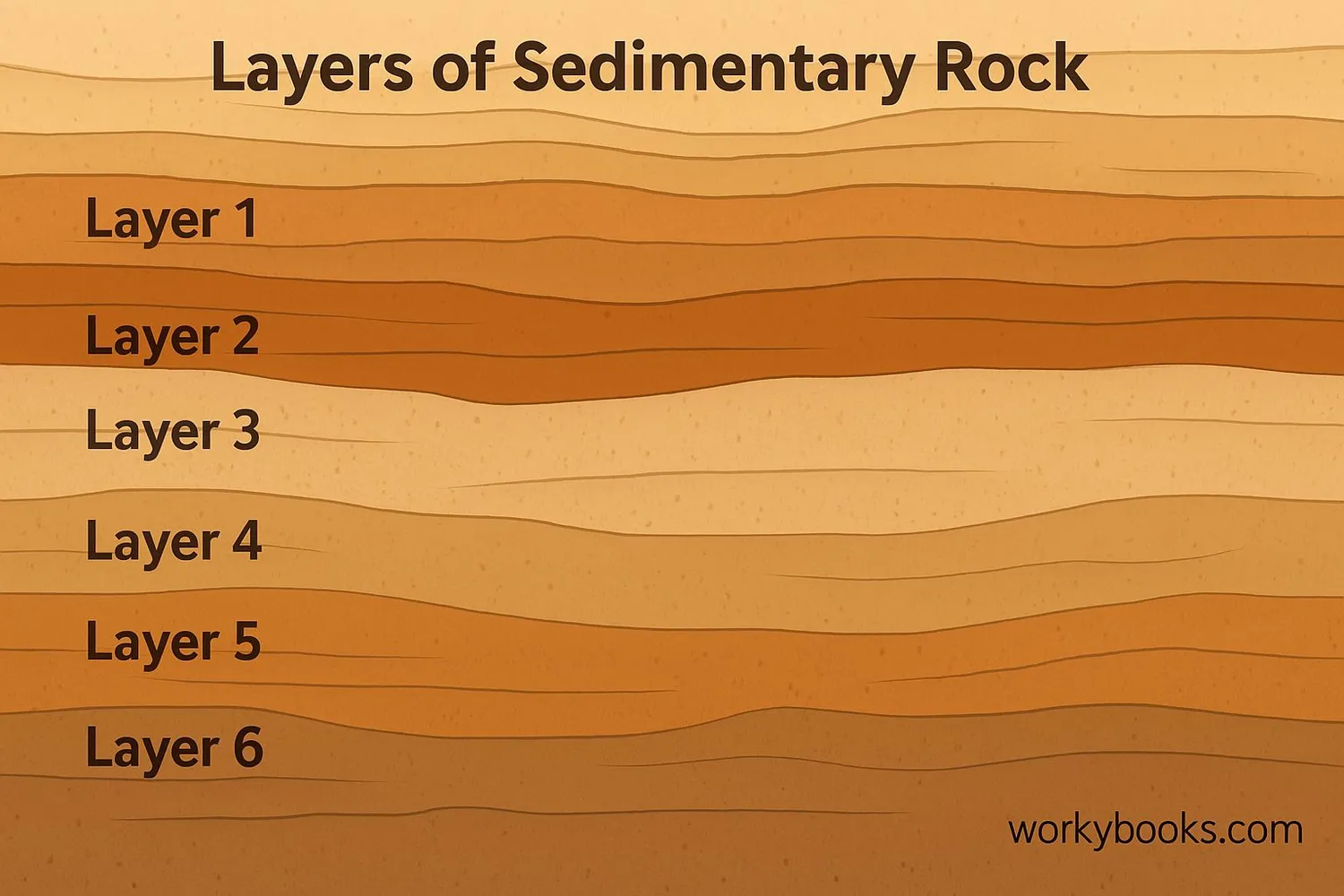
Sedimentary rocks are rocks formed from pieces of other rocks, minerals, or organic material that have been pressed and cemented together over time. They're like Earth's history books because they often contain fossils and show us what environments were like long ago.
These rocks form through a process called lithification, where loose sediments become solid rock. Sedimentary rocks cover about 75% of Earth's land surface, but they make up only about 5% of Earth's crust by volume.
Key Fact
Sedimentary rocks are the only rock type that regularly contains fossils!
How Sedimentary Rocks Form
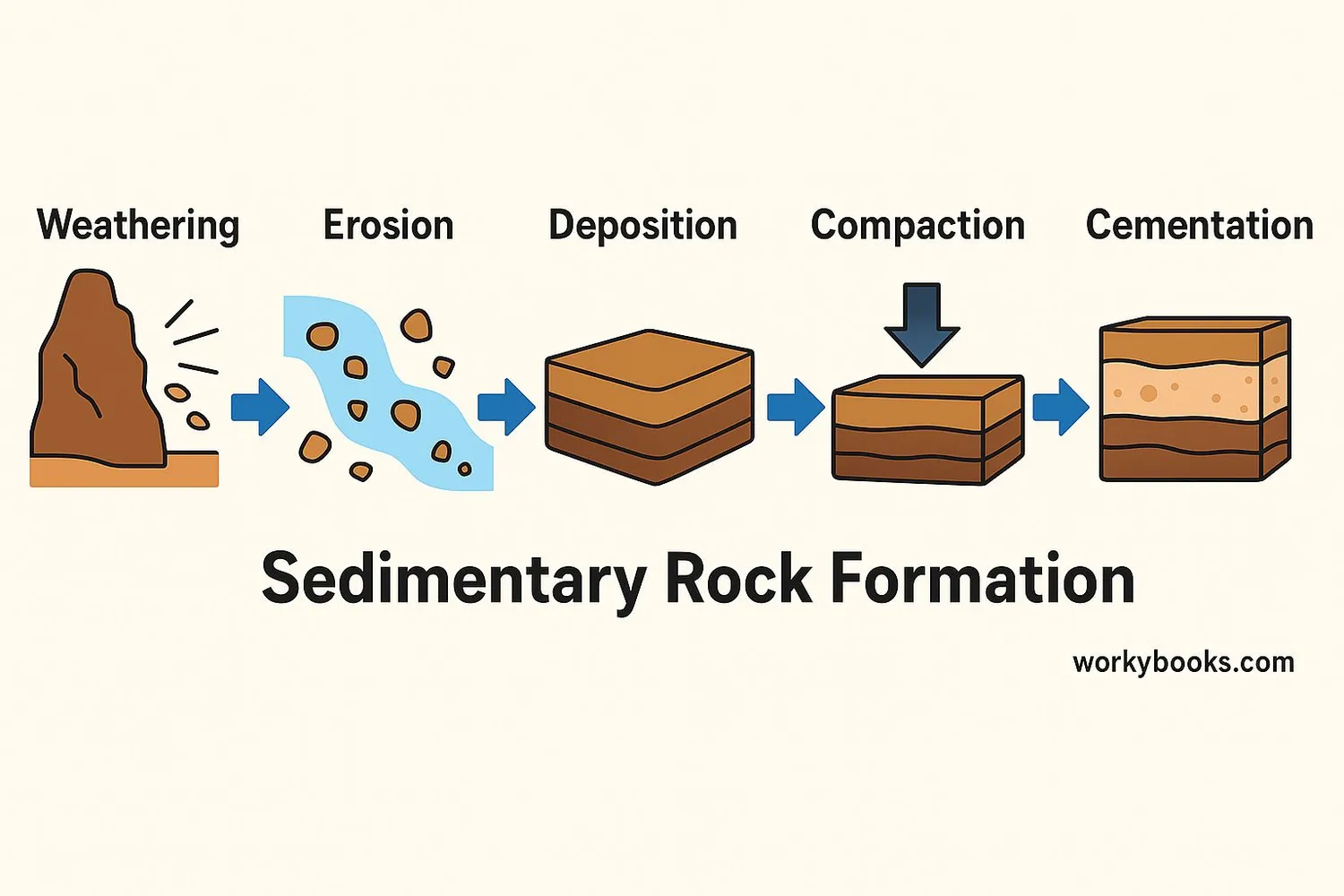
Sedimentary rocks form through a fascinating multi-step process that can take thousands to millions of years:
Weathering
Rocks break down into smaller pieces through physical or chemical processes
Erosion
Wind, water, or ice transport sediments to new locations
Deposition
Sediments settle in layers, often at the bottom of bodies of water
Compaction
Weight of upper layers squeezes sediments together
Cementation
Minerals dissolved in water glue sediments together
This entire process is called lithification. The type of sedimentary rock formed depends on the source material, how it was transported, and the environment where it was deposited.
Did You Know?
The Grand Canyon's rock layers represent over 2 billion years of Earth's history preserved in sedimentary rock!
Types & Examples
Sedimentary rocks come in three main types based on how they form:
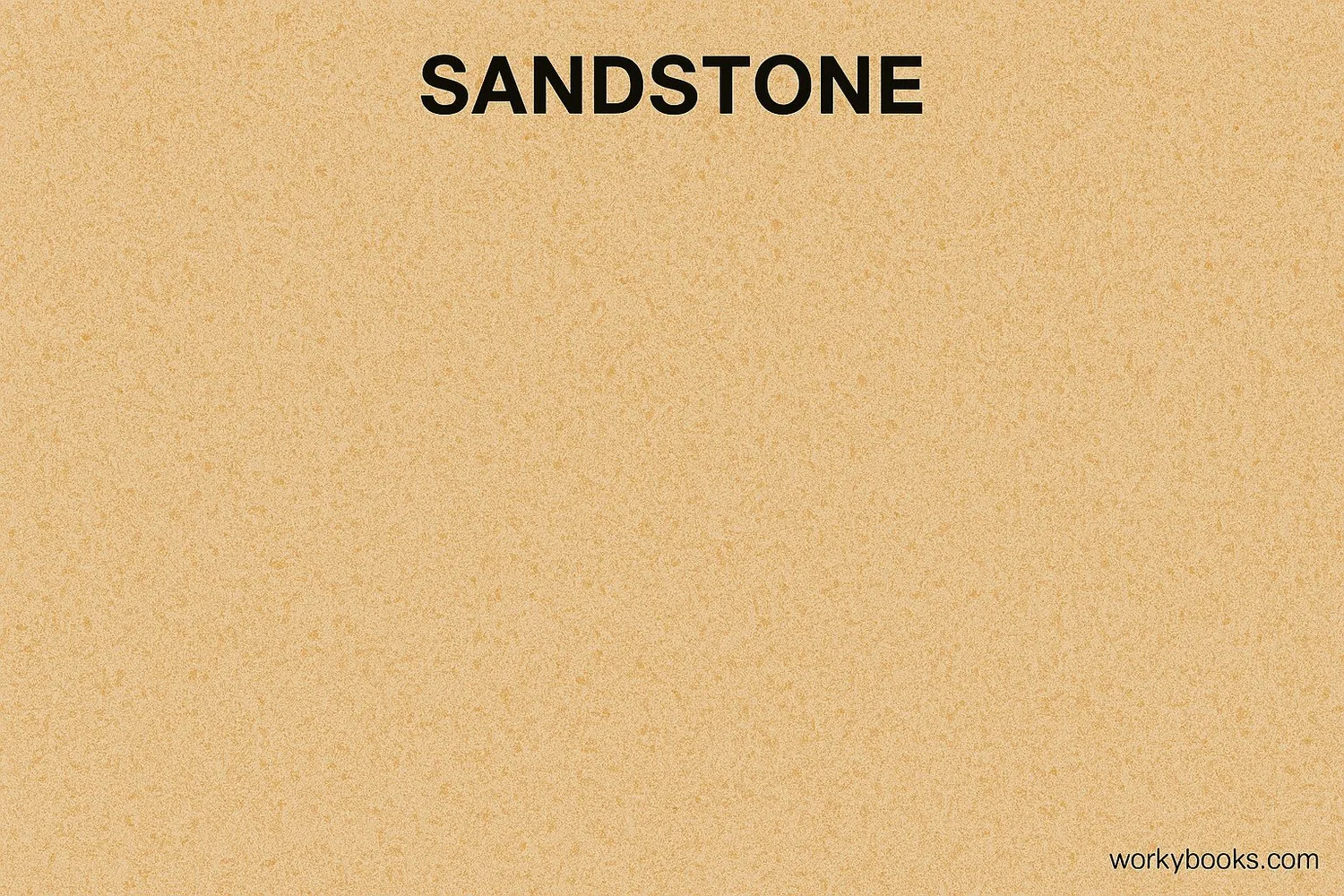
Clastic Rocks
Formed from fragments of other rocks
Examples: Sandstone, shale, conglomerate
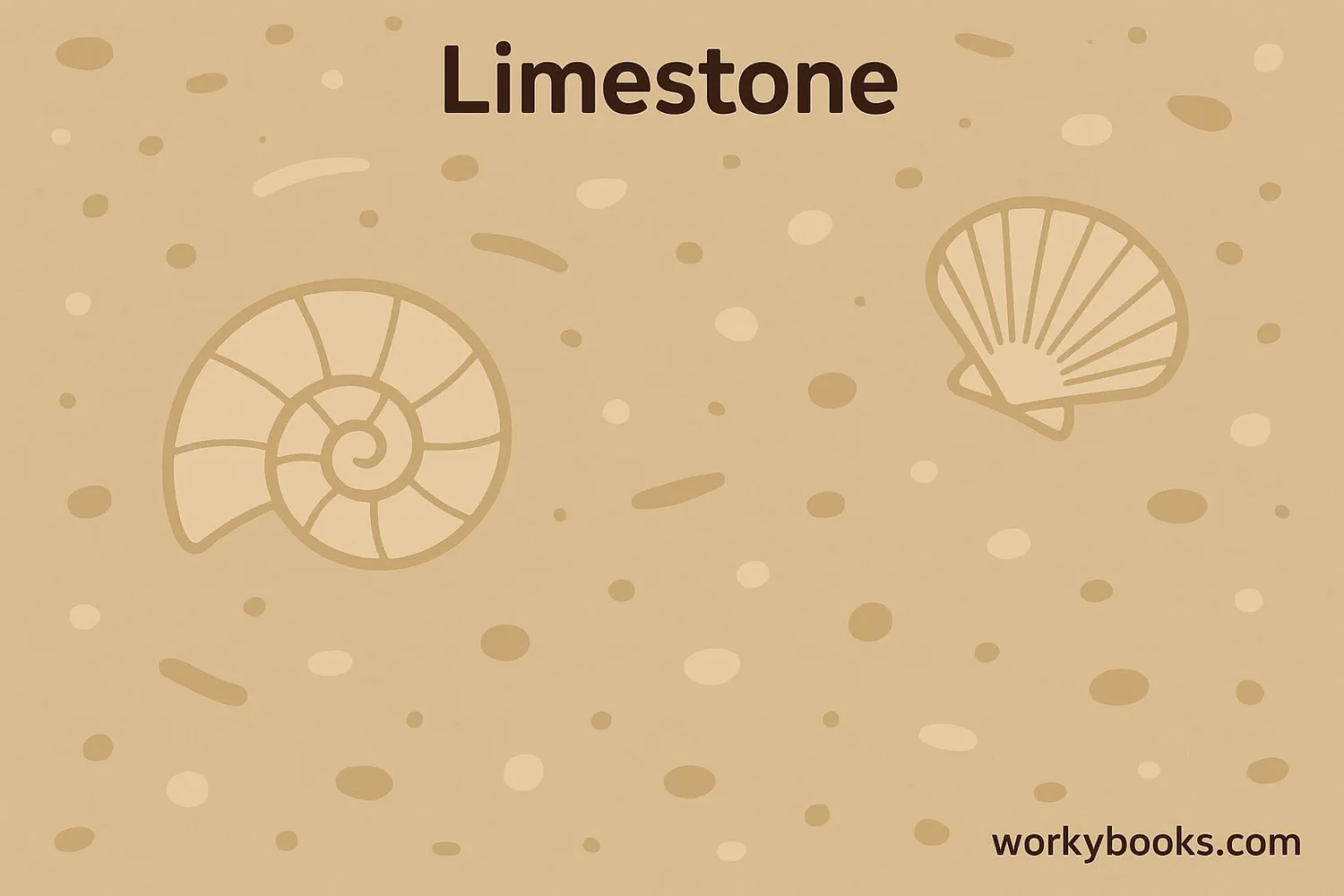
Chemical Rocks
Formed from minerals dissolved in water
Examples: Limestone, rock salt, gypsum
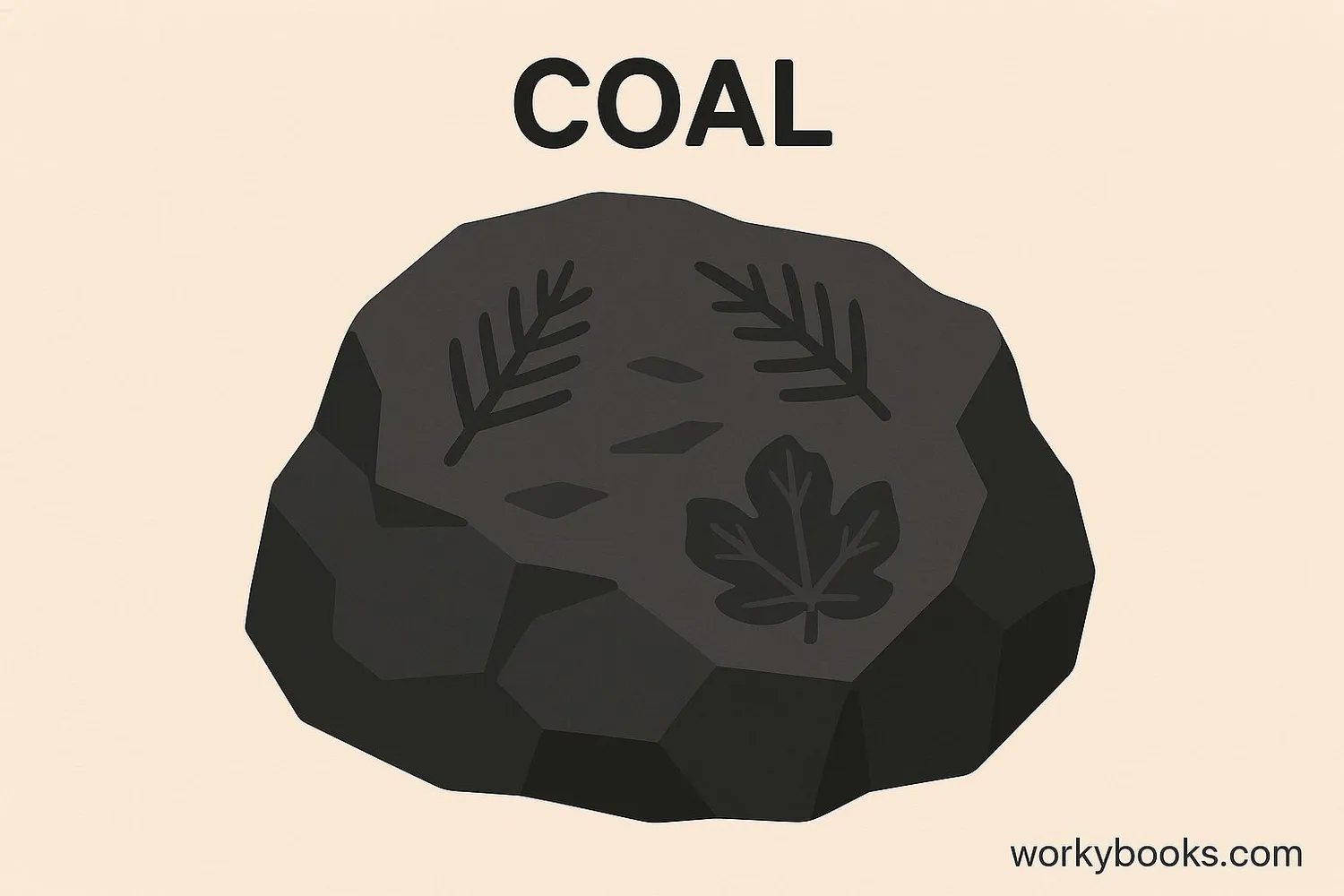
Organic Rocks
Formed from plant and animal remains
Examples: Coal, some types of limestone
Sandstone is made of sand-sized grains cemented together. Limestone often forms from marine organisms and can contain fossils. Shale is the most common sedimentary rock, formed from compacted mud and clay.
Rock Record
Sedimentary rocks preserve 90% of Earth's geological history in their layers!
Why Sedimentary Rocks Matter
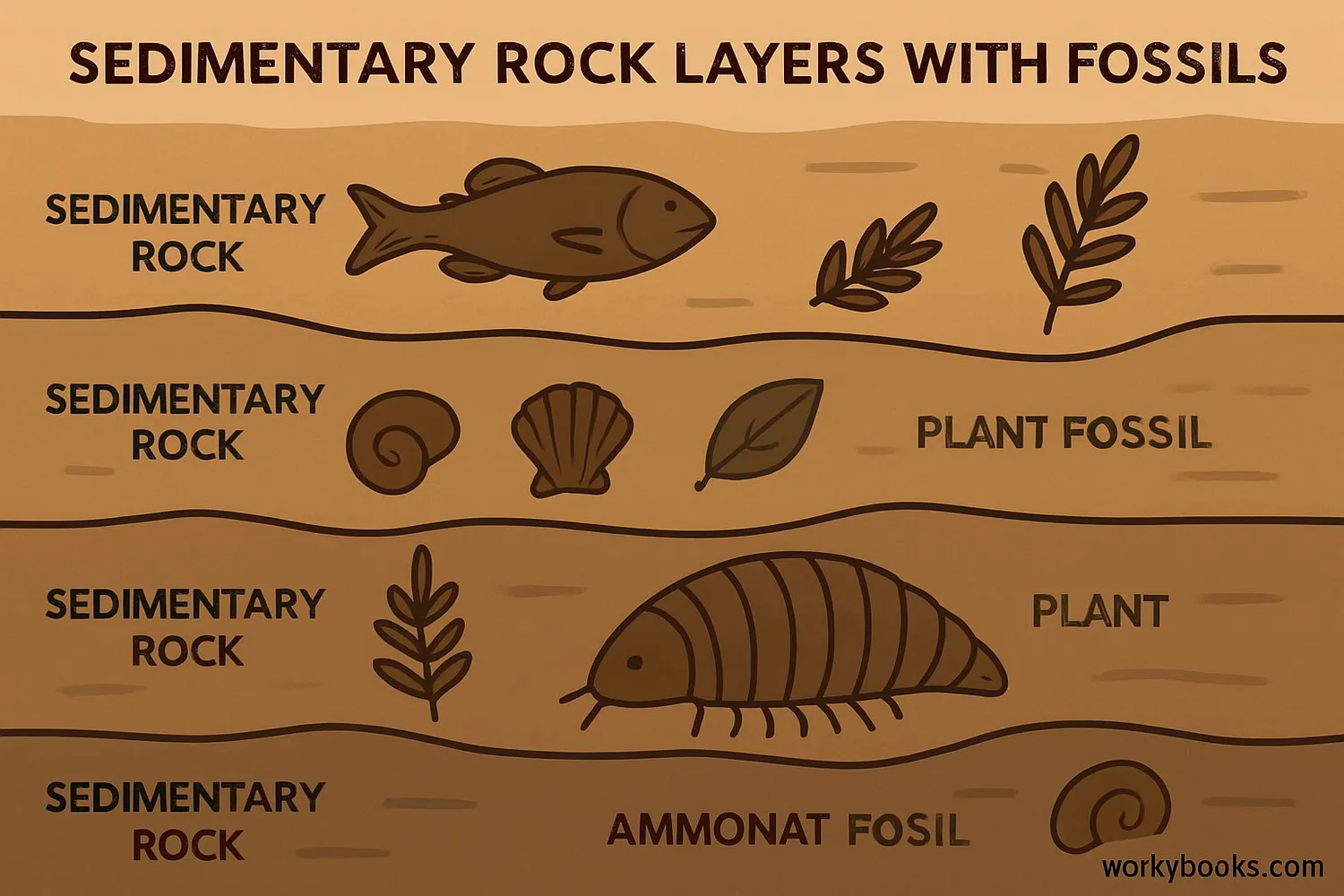
Sedimentary rocks are incredibly important for several reasons:
Earth's History
Their layers preserve a record of past environments and life forms
Natural Resources
They contain coal, oil, natural gas, and groundwater
Building Materials
Sandstone and limestone are used in construction worldwide
Without sedimentary rocks, we wouldn't have:
• Fossil records showing evolution
• Most of our energy resources
• Many construction materials
• Important clues about Earth's climate history
Geologists study sedimentary rocks to understand past environments, climate changes, and even locate valuable resources.
Sedimentary Rocks Quiz
Test your knowledge about sedimentary rocks with this quiz!
Frequently Asked Questions
Here are answers to common questions about sedimentary rocks:
Amazing Sedimentary Rock Facts
Discover some fascinating facts about sedimentary rocks:
Rock Record
The layers in the Grand Canyon represent over 2 billion years of Earth's history preserved in sedimentary rock!
Chalk Origins
Chalk is a sedimentary rock formed from the microscopic skeletons of plankton that lived in ancient seas!
Energy Source
Nearly all the world's coal, oil, and natural gas are found in sedimentary rock formations!
Beyond Earth
NASA's rovers have found sedimentary rocks on Mars, suggesting the planet once had flowing water!





